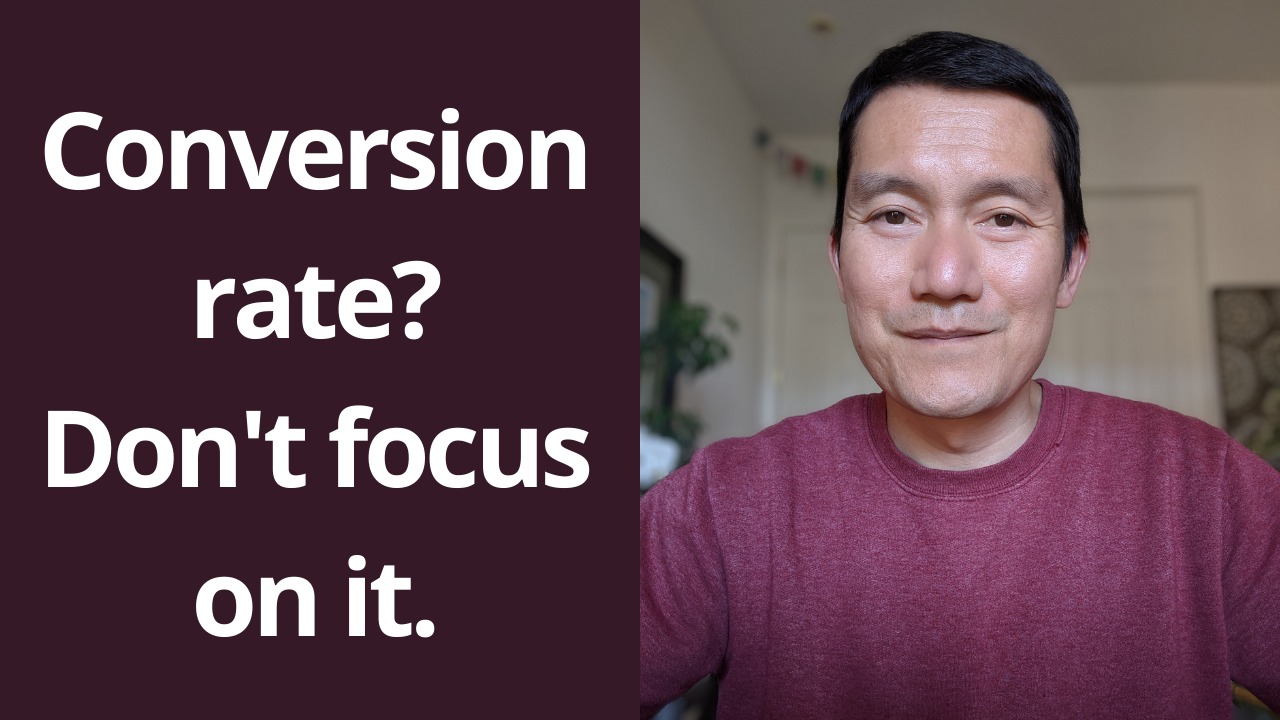Conversion Rates? Authentic solopreneurs don’t have to worry about it.
There’s so much talk in marketing about increasing "conversion rates” -- which may mean how many webpage visitors buy your product, or how many opt into your email list.
The marketer is making the visitor take action, often through persuasion psychology. Increasing your persuasion and hypnotic marketing is supposed to increase your conversion rates.
Yet, none of us heart-based entrepreneurs like to focus on these manipulative actions. Thankfully, we don’t need to worry about it, to get enough clients.
The marketer is making the visitor take action, often through persuasion psychology. Increasing your persuasion and hypnotic marketing is supposed to increase your conversion rates.
Yet, none of us heart-based entrepreneurs like to focus on these manipulative actions. Thankfully, we don’t need to worry about it, to get enough clients.
The alternative to focusing on Conversion Rates
In contrast to focusing on increasing conversions, a nobler path would be to improve the product-market fit (the process is taught in-depth in the Market Discovery course), and then optimizing the traffic source so that we get more thoughtfully-targeted visitors.
Honestly, I don’t worry at all about conversion rates. Instead, I focus on growing a bigger right-fit audience by creating authentic content, and then using paid ads to distribute that content to targeted audiences.
Having a bigger warm audience means that even a small conversion rate results in enough sales to more than sustain a self-employed business.
It also means that my marketing can be much gentler, less pushy, and without persuasion and guile.
In contrast to focusing on increasing conversions, a nobler path would be to improve the product-market fit (the process is taught in-depth in the Market Discovery course), and then optimizing the traffic source so that we get more thoughtfully-targeted visitors.
Honestly, I don’t worry at all about conversion rates. Instead, I focus on growing a bigger right-fit audience by creating authentic content, and then using paid ads to distribute that content to targeted audiences.
Having a bigger warm audience means that even a small conversion rate results in enough sales to more than sustain a self-employed business.
It also means that my marketing can be much gentler, less pushy, and without persuasion and guile.
Worthwhile Marketing
These are the worthwhile efforts for authentic marketing: doing more market research (essentially, talking with your audience to better understand their wants and needs), making more experiments in a diversity of offers, and applying generosity of spirit in creating content. Doing these things consistently is worthwhile marketing.
When there is a great match between our offer (our product or service) and the audience, then no pushing or persuasion is required to get sales. When there is alignment, you only need to gently announce what you have, and the right people eagerly sign up.
Better distribution of content + Better product-market fit = naturally higher sales with no need for persuasion psychology.
Authentic Marketing is making friends at scale
Another way to think about it is that authentic marketing is the act of treating your market like they’re your friends, except doing it at scale.
You don't try to convert your friends, right?
Instead, what you aim to do is to get to know your friends better, so that when you want to hang out with them, you can suggest some joint activities that align their interests with yours. Then there’s no persuasion needed. You’re suggesting what they want to do anyway!
Sometimes, one friend isn't interested in your suggested activity, yet another friend will be. So besides alignment, you also need to grow your base of friends… your “warm audience”.
Back to authentic marketing -- grow your audience by creating helpful content, and distribute that content through paid ads, SEO, and collaborations with fellow content creators.
Even poorly optimized branding can work…
Having launched dozens of courses, services, and programs, I've seen this consistently:
A right-fit offer (which meets the wants of your ideal customer, using the language they understand) will sell really well, even with lackluster graphics and branding.
How do I know this? Because most of my best-selling offers have mediocre graphics and branding! Yet I have other offers where I spent more effort and money on branding… and they still didn’t do well.
People may judge books by the cover, but they won’t buy higher-price things (courses, programs, and services) unless it’s a good fit for them. The charm of the branding may increase the proportion of sales, but it’s an amplifier, not the core reasons people buy.
So… do conversion rates matter?
Instead of randomly declaring a conversion rate goal (1%, 3%, 10%, etc.) it's better to sell authentically, then track what the conversion rate actually is… and then work on improving it for the next launch by improving product-market fit and growing one’s warm audience.
Too many people set a conversion rate goal without basing it on their recent history of sales. This sets up a fantasy, and can set you up for big disappointment and discouragement.
Also, it's not about making sure the audience sees it 7 times, or 13 times, or whatever the advertising industry currently recommends.
Again, it’s about (1) improving product-market fit and (2) continuing to grow a warm audience. Those two factors matter the most to how many clients/customers you get.
